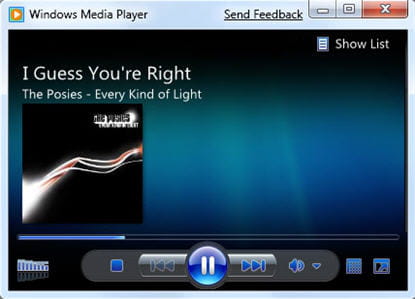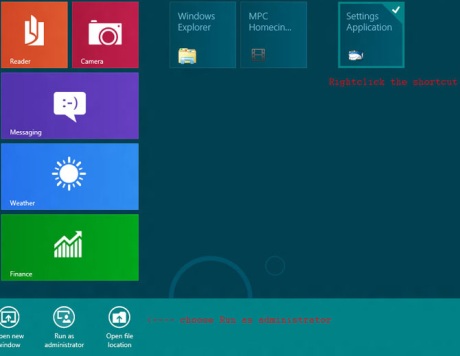Codec Pour Windows Media Maker
Aug 06, 2004 Configuring Windows Media Player on a specific computer to prevent automatic downloading of codecs. Turn off Windows Movie Maker automatic codec.

Codec pour windows movie maker vista, Windows Movie Maker 2.6, Windows Media Player 11, Vista Codec Package 6.2.1.
Download Windows Movie Maker 2.6 : MEDIA PLAYERS Advertising Beautiful Wallpapers Windows Codecs Videohelp.com. Codecs.com is known.


Codecs: frequently asked questions. the Player uses the Windows Media Audio codec by default to compress the song into a compact WMA file. Movie Maker.
Codec for Windows Movie Maker
Media. Search Media; New Media; Resources. Windows Forum. Forums Windows 8 Forums Windows 8 Help and Support movie maker/codec woes.
None of the codecs shown here will solve the issue with movie maker, which is mostly after movie maker finishes editing your video, you will notice the video is distorted. None of the suggested downloads here will actually correct that problem. Microsoft
has the correct download for this problem, however getting it from them seems to be next to impossible for some reason.

Encoding Audio and video with Windows Media Codecs
Introducing the Windows Media Codecs Microsoft has developed a suite of codecs for audio, Microsoft Windows Movie Maker, Microsoft Expression Encoder.
Create higher-quality digital media content by using the codecs that are included with Windows Media Format runtime. When using Windows Media Encoder, Windows Movie Maker, Microsoft Expression Encoder, or Microsoft Producer to create Windows Media-based content, you can optimize the quality of the digital media experience by specifying the codec type and settings, either by using the predetermined configurations or by using your own settings.
Microsoft Windows Media Player
Microsoft Windows Media Encoder 9 Series
Microsoft Producer for Microsoft Office PowerPoint
Microsoft Expression Encoder Contents
IntroductionCodecs enable content authors to specify the bit rate of a stream, which, when coupled with the duration of that stream, determines the size of the resulting file. Codecs also provide the flexibility to adjust the way encoded video and audio content looks and sounds. The codecs do this by compressing an audio or video source during encoding and then decompressing the audio or video during playback. This article explains what a codec is and describes the codecs that are included with Microsoft Windows Media software that encodes and plays digital media content. The article also describes codec version compatibility and how codecs can be updated on client computers.
Back to TopWhat Is a Codec.A codec is an algorithm, which can be thought of as a list of instructions that identifies the method used to compress data into fewer bytes. By following these instructions, applications such as encoders and players can reliably compress and decompress data. In the case of digital media content, codecs are used to decrease the content s file size and bit rate the amount of data per second that is required to render audio and video content. With smaller file sizes and lower bit rates, digital media content can be stored and streamed over a network more quickly and easily.
A codec is applied to a file when the file is encoded or recorded. For example, when you use an encoder to encode a live stream or to create a file, or if you use player software like Windows Media Player to copy a file from a CD, these files are encoded or compressed using a codec.
Most files that you find on the Internet are already compressed. You may not realize that those files are compressed because you can easily download and play the file with no additional actions. Your computer can play any compressed file, provided that the codec it was compressed with is available on the computer s hard disk. The computer uses the codec s instructions to decompress the file you want to play. If the codec is not on your computer, then a player such as Windows Media Player will try to download the codec so that it can understand how to decompress the file. If the codec is not available, the Player will let you know that it does not understand how to play the file. In this case, there s nothing wrong with the file; your computer just does not have the instructions on how to play that file.
Back to TopIntroducing the Windows Media CodecsMicrosoft has developed a suite of codecs for audio, screen captures, and video that delivers a variety of bit rates. This suite provides you with a great deal of flexibility for optimizing the quality of the digital media experience for a particular scenario.
When you are preparing to create content by using a Microsoft authoring program such as Windows Media Encoder 9 Series, Microsoft Windows Movie Maker, Microsoft Expression Encoder, or Microsoft Producer for Microsoft Office PowerPoint, you can use a predefined profile. A profile is a choice of codec and its specific settings that are intended to optimize the viewer s experience. All Windows Media-based authoring programs include profiles that are designed to ease the process of creating content for a specific type of output. Most authoring programs also enable you to create custom profiles that use your own settings.
Windows Media Encoder 9 Series is a multi-purpose encoding tool that you can use to create most types of on-demand and live content and will encode content using any of the codecs listed in the table in the following section. Installing the latest Windows Media Player or Windows Media Format SDK will ensure that the latest codecs are installed and available to be used by the Windows Media Encoder 9 Series tool.
End users do not need to know what a codec is in order to play Windows Media-based content. If the user is using Windows Media Player version 6.4 or later, there is a good chance that the necessary codec is already installed on the user s computer. If you create content using a codec that is not installed on the user s computer, such as the Windows Media Video 9 codec, Windows Media Player version 7.0 or later can download and install the codec automatically. Depending on the user s Internet Explorer security settings, this download can be performed without any user interaction or the user may be required to verify that they want to download the codec.
Windows Media Audio and Video codecs support both VBR and constant bit rate CBR encoding. VBR encoding is designed for use when you want to create a downloadable file that has a smaller file size and bit rate without sacrificing sound and video quality. With VBR encoding, you can often achieve optimal quality with a lower average bit rate and file size. While some portions of a track may contain a lot of data and will be harder to compress, other portions contain relatively little data and require fewer bits. Quality is optimized by detecting which sections are most difficult to encode and allocating more bits where they are needed most. For low-bit rate streaming and devices such as CD and DVD players, a peak-constrained mode can be used so that the bit rate of the more complex content does not exceed the capacity of the delivery method. In some cases, you can end up with a VBR-encoded file that has the same quality as a CBR-encoded file, but with only half the file size of the CBR-encoded file.
CBR encoding is designed to work most effectively in a streaming scenario where the end user s bandwidth is a consideration. With CBR encoding, the bit rate of the file or stream remains fairly constant and close to the target bit rate over the course of the stream. The disadvantage of CBR encoding is that the quality of the encoded content is not constant. Because some pieces of content can be more difficult to compress than others, parts of a CBR stream can be of lower quality than others. In addition, CBR encoding results in inconsistent quality from one stream to the next, and quality variations are more pronounced at lower bit rates.
With CBR encoding, you can use one-pass or two-pass encoding. With VBR encoding, you have three options: quality-based VBR one-pass, bit-rate-based VBR two-pass, and peak bit rate-based VBR two-pass. Two-pass encoding is an encoding method that is available with some codecs. On the first pass, the codec gathers information about the content of the stream. On the second pass, the codec uses the information gathered on the first pass to optimize the encoding process for the stream. Not all codecs support two-pass CBR or VBR encoding.
The following table lists the supported encoding methods for the Windows Media Audio and Video 9 codecs.CodecOne-pass CBR Two-pass CBRQuality-based VBRBit rate-based VBRPeak bit rate-based VBRWindows Media Audio 10 Professional
Windows Media Audio 9 Lossless
Windows Media Video 9 Advanced Profile
With encoding profiles and the automatic download feature in Windows Media Player, codec selection and configuration is easy for both content creators and end users. However, careful consideration should be given to the playback experience, the delivery method, and the target audience when choosing the optimal Windows Media codec for your content. The codec quick reference chart is provided to assist you in making that choice.
Back to TopCodec Quick Reference ChartThe following tables provide basic information about the codecs that are installed with the latest versions of Windows Media Encoder and Windows Media Player. You can also adjust profile variables such as codec type, frame rate, and audio/video quality in order to suit your specific needs and system configuration.
Audio CodecsCodecWhen to useWindows Media Audio 9
For use in most scenarios. This codec provides sound quality that is 20 percent better than Windows Media Audio 8. It also supports VBR audio that enables even higher quality audio at smaller file sizes. Windows Media Audio 9 is backward-compatible with previous Windows Media Audio-compatible decoders, which means that Windows Media 9 content can be played in previous versions of the Player or older consumer electronic devices that support Windows Media.
Windows Media Audio 10 Professional
Offers the widest range of capabilities of any Windows Media audio codec. It can be used for mobile scenarios at bit rates below 128 kilobits per second Kbps all the way up to multi-channel playback at 768 kbps. Now one codec can deliver profiles that offer both better-than-CD resolutions and high-efficiency encoding to optimize for wireless delivery and playback. Coding scenarios include:
Low-bit-rate coding with good quality stereo at rates starting at 24 Kbps, for scenarios with severe bandwidth or storage constraints.
Medium-bit-rate, high-quality stereo, and multi-channel coding at rates of 64-128 Kbps for stereo and 128 Kbps and higher for 5.1 signals, for scenarios with moderate bandwidth or storage constraints, with an equal emphasis on quality.
High-bit rate, extremely high-quality stereo, and multichannel coding at rates of 160 Kbps and higher for stereo and 320 Kbps to 1.5 megabits per second Mbps for 7.1 signals, for scenarios where the highest quality is more important than bandwidth or storage constraints.Windows Media Audio 9 Lossless
For use in local playback scenarios. This codec is a great codec to use for archiving CD collections. Although the compression ratio achieved with this codec is lower than the ratio achieved with other Windows Media Audio 9 codecs, it is still more efficient than direct copying of the digital media content. Using this codec, content will be compressed at a 2:1 or 3:1 ratio depending on the complexity of the original. The audio quality of content compressed using this codec is the best of all Windows Media codecs.
For use at lower bit rates. This low-bit-rate codec is primarily targeted for speech content, but performs very well with mixed-mode content that includes both voice and music. This codec offers superior quality for low-bit-rate streaming scenarios less than 20 Kbps, such as radio broadcasts, advertising, e-books, and voiceovers.
Video CodecsCodecWhen to useWindows Media Video 9 Simple and Main Profiles
These profiles fully conform with the Society of Motion Picture and Television Engineers SMPTE VC-1 standard, and provide high-quality video for streaming and downloading. They provide support for a wide range of bit rates, from high-definition content at one-half to one-third the bit rate of MPEG-2, to low-bit rate Internet video that is delivered over a dial-up modem. This codec also supports professional-quality downloadable video with two-pass and VBR encoding. Windows Media Video 9 is already supported by a wide variety of players and devices.
This advanced profile fully conforms with SMPTE s VC-1 standard, supports interlaced content, and is transport-independent. Content creators can use this profile to deliver either progressive or interlaced content at quality levels comparable to MPEG-2 but at considerably lower data rates.
In the past, interlaced video content was always de-interlaced before encoding with the Windows Media Video codec. Now, the Windows Media 9 video encoder supports compression of interlaced content without first converting it to progressive. Maintaining interlacing in an encoded file is important if the content is ever rendered on an interlaced display, such as a television. Transport-independence also enables the delivery of Windows Media Video 9 Advanced Profile over systems that are not Windows Media–based, such as standards-based broadcast infrastructures through native MPEG-2 transport streams or wireless infrastructures through real-time transfer protocol RTP.
For content that needs to be captured from the computer screen. This codec is ideal for delivering demos or demonstrating computer use for training. Windows Media Video 9 Screen delivers better handling of bitmap images and screen motion, even on relatively modest CPUs.
Windows Media Video 9 Image Version 2
For content based on still images. This codec transforms still images into video with motion by using pan, zoom, and cross-fade transitions, creating an unlimited number of effects. The results can then be delivered at data rates as low as 20 Kbps. These files, which are compressed using either CBR or one-pass VBR modes, can be easily shared because they are much smaller than the original image files.
For use in most scenarios. This codec enables earlier versions of encoding and editing applications to support the Windows Media Video 9 codec in file containers such as Audio Video Interleaved AVI. This codec package also enables Windows Media Video WMV files based on Windows Media Format 9 Series to be played in Windows Media Player 6.4, in both ASF and AVI file containers. Simple and Main profiles of the WMV9 VCM codec are compliant with the Simple and Main profiles of the VC-1 standard.
Back to TopHow to Create Content That Users Can PlayAll of the codecs listed in the previous tables are available to users with Windows Media Player version 7.0 or later. If a new version of a codec is released, the Player automatically downloads the new version from the Microsoft Web site. You can download the following content authoring programs from the Microsoft Web site:
Windows Media Encoder 9 Series
If you must support Windows Media Player version 6.4, you should also consider using the Video Compression Manager VCM -based version of the Windows Media Video 9 encoder/decoder, which enables legacy encoding and editing applications to support the Windows Media Video 9 codec in file containers such as AVI. The package also enables Windows Media Video 9 to be played in Windows Media Player 6.4. After the package is installed, legacy solutions will be able to use the codec automatically through the VCM interface. The VCM includes a property page so that users can set encoding parameters.
If the content you create will be streamed on an internal network that does not provide users with access to the Internet, you can manually install the latest codecs by installing the latest version of Windows Media Player or Windows Media Format SDK runtime.
Users can download the latest version of Windows Media Player from the Windows Media Download Center.
Back to TopFor More Information
